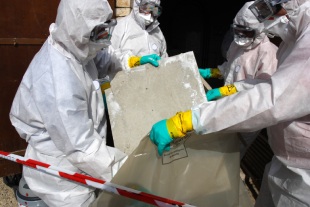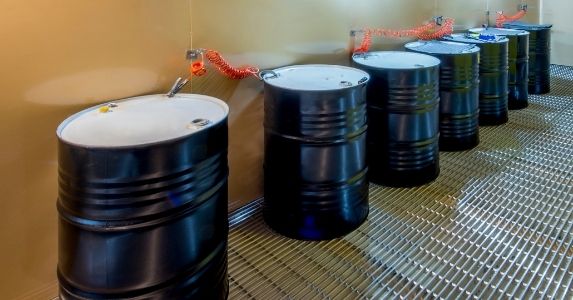Got Asbestos? Steps for Successful Abatement
Companies expanding their facilities or revamping their buildings and infrastructure may encounter asbestos—a dangerous substance that requires professional abatement.
For centuries, asbestos was useful as a heat-resistant material for construction and insulation. However, it’s also a highly dangerous substance—in any form and amount. Exposure can cause conditions like mesothelioma, a cancer of the lung tissue; asbestosis, a chronic lung disease; and other ailments.
In the United States, builders widely used asbestos in construction until the 1980s, when public pushback began restricting it. But the substance remains present in many structures—schools, factories, residential buildings and more. Today, asbestos results in 39,000 deaths in the United States annually, according to an advocacy website. Some 1.3 million workers in construction and industrial positions remain at risk to exposure, as well.
Asbestos Risk Today
Asbestos is still legal. Nevertheless, Congress, anti-asbestos advocates, and the federal Environmental Protection Agency (EPA) are trying to ban the substance completely in any new applications. But even if legislators pass a full asbestos prohibition, the material will remain in many forms through the United States—particularly in parts of the Northwest and Northeast, where it was mined and processed.
Asbestos is most likely to be present in buildings such as:
- Auto parts factories
- Textile mills
- Power plants
- Shipyards
- Schools
Asbestos is located specifically within:
- Vinyl floor tiles
- Roofing and siding shingles
- Textured paints and patching compounds
- Hot water and steam pipes
- Oil and coal furnaces
Asbestos Contamination and Abatement
Asbestos is a national problem for organizations of all sizes and types, both growing and new, from life sciences and health care companies to manufacturers and beyond. The asbestos challenge is likely to grow through the United States, given the recent passage of the Infrastructure Investment and Jobs Act.
The legislation will likely promote growth across the board for businesses of all types. Organizations will need to expand their physical operations, which will involve the gutting and renovation of existing structures and buildings for expansion and renovation. This increases the risk that organizations will uncover asbestos. Additionally, President Joe Biden is providing $200-plus million to address brownfield sites—including asbestos-polluted buildings. This money may assist organizations seeking to remedy their asbestos footprint.
Exposing your workers or the public to asbestos through construction involves legal responsibility, potential fines, health, and wellbeing complications, and more. Fortunately, there are proven processes for safe asbestos abatement—which involves ways to control the release of asbestos fibers by sealing them in place or removing them for final disposal.
Where Does Asbestos Abatement Apply?
Suppose you are starting a business in an older building in a downtown area, and need to create or expand labs or workspaces. Construction and demolition begin—and during the gutting of the interior, you encounter suspect asbestos deposits.
You now must perform tests, and based on the results, you may have to proceed with abatement. These abatement processes must conform to strict local, state, and federal EPA and Occupational Health and Safety Administration (OSHA) guidelines.
Remediation rules are very precise—and the presence of even tiny amounts of asbestos will trigger their provisions. For instance, OSHA states that employee asbestos exposure must not exceed “0.1 fiber per cubic centimeter of air as an 8-hour time-weighted average.” Other rules state that asbestos- containing materials (ACMs) may hold only 1%-plus amount of the substance. So, it doesn’t require much of the substance to require an asbestos remediation.
Removing Asbestos
Some asbestos can be dealt with by encapsulation or enclosure. If the materials are friable (exceeding the legal amount of asbestos—and can be pulverized by hand), however, and can’t be sealed in place, removal is required.
To give you a sense of what’s involved, we’ll review what may be necessary during an asbestos removal. The removal team, wearing full personal protective equipment (PPE), such as respirators, must perform a wide variety of tasks. These include preparing the space to be decontaminated; covering the affected areas; and controlling the airflow into the building.
Once the contaminated material is removed, it needs to be placed in tagged bags and sent to a certified disposal site. Then the remediation team must clean the entire area and remove all the materials, including the soiled PPE. All this must be done according to best legal and safety practices to comply with relevant regulations.
Given the complexity of the abatement process, you’ll want to turn to an asbestos abatement partner to oversee the operation. Choosing the right vendor will save you money, time, and resources—and ensure compliance.
Vetting an Asbestos Remediation Partner
You can’t afford to risk something as crucial as an asbestos abatement project to an untried and unreliable partner. When seeking a service provider, you must do due diligence and discover if the vendor has everything you need, in terms of equipment, personnel, and more. Consider the below as a start in your review.
Make sure the candidate can provide:
- An outstanding record: The vendor should have a history in your region and industry in the efficient detection and removal or other treatment of asbestos sites. Read cases studies and see if you can obtain references and testimonials.
- The correct professional qualifications: Review the personnel and their capabilities. All abatement contractors, asbestos inspectors, and supervisors, as well as the companies they work with (such as the disposal site operator), must have a physical license or certification. Find out if they offer abatement contractors and asbestos inspectors—as well as an asbestos project monitor (see number 7).
- Complete compliance capabilities: Anyone engaging in asbestos-related activity must be aware of municipal, state, and federal OSHA and EPA requirements for the entire process. And they must comply with them.
- A documented removal/disposal plan: This plan must include the removal, loading, and safe transportation of asbestos materials from the origination site to the final disposal facility. Also, be sure that the site operator is fully compliant, as well.
- All gear and solutions: Be sure that this is a full-service vendor. Besides a qualified workforce, your vendor must also have the gear and tools to provide all the necessary testing, removal, and disposal equipment. You don’t want any surprises if something arises you are unprepared for.
- Follow-up and certification capabilities: A best practice is to certify the project—ensuring there was no escape of the asbestos being removed. A successful wrap is demonstrated by testing to certify the containment measures worked and the cleanup was properly conducted.
- An asbestos project monitor: This professional isn’t legally required, but they are great to have on an abatement team. The training and experience of an asbestos project monitor makes them ideal to execute the tasks in step 6. Additionally, after the final cleanup, the monitor can perform an air clearance to determine the abatement area is within proper levels and the decontamination was sufficient.
Looking for an asbestos abatement partner? Talk to Triumvirate Environmental today. We offer testing and remediation services for asbestos and similar contaminants.






